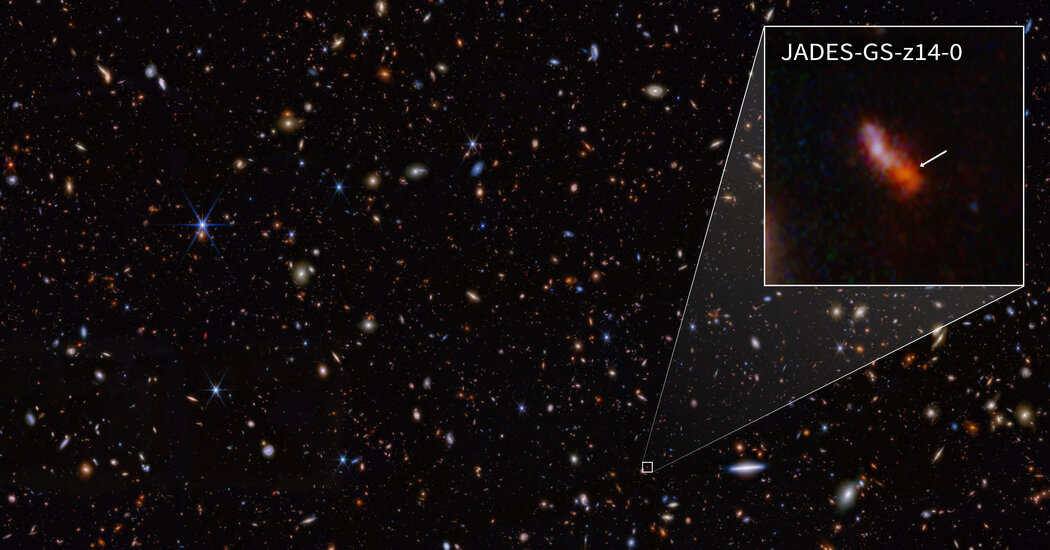Since the James Webb Space Telescope began operating two years ago, astronomers have been using it to leapfrog one another millions of years into the past, back toward the moment they call cosmic dawn, when the first stars and galaxies were formed.
Last month, an international team doing research as the JWST Advanced Deep Extragalactic Survey, or JADES, said it had identified the earliest, most distant galaxy yet found — a banana-shaped blob of color measuring 1,600 light-years across. It was already shining with intense starlight when the universe was in its relative infancy, at only 290 million years old, the astronomers said.
The new galaxy, known as JADES-GS-z14-0, is one of a string of Webb discoveries, including early galaxies and black holes, that challenge conventional models of how the first stars and galaxies formed.
“This discovery proves that luminous galaxies were already in place 300 million years after the Big Bang and are more common than what was expected,” the researchers wrote in a paper posted to an online physics archive.
“Galaxy formation models will need to address the existence of such large and luminous galaxies so early in cosmic history,” said the authors, who were led by Stefano Carniani, a professor at the university Scuola Normale Superiore in Pisa, Italy.
The galaxy was first spotted during a deep space survey with the Webb’s Near Infrared Camera, one of the telescope’s workhorse instruments. Within a patch of southern sky known as the Jades Origin Field, which is about a quarter of the size of a full moon, scientists found 11 galaxies that seemed to date from when the universe was less than 400 million years old — far more than they had expected.
